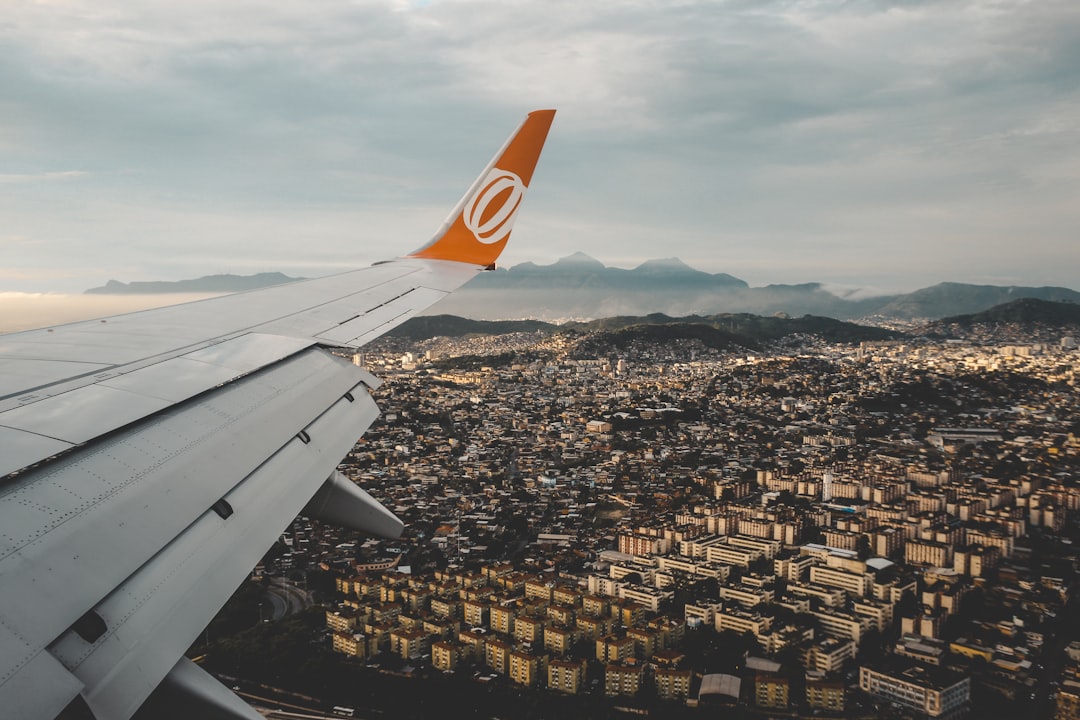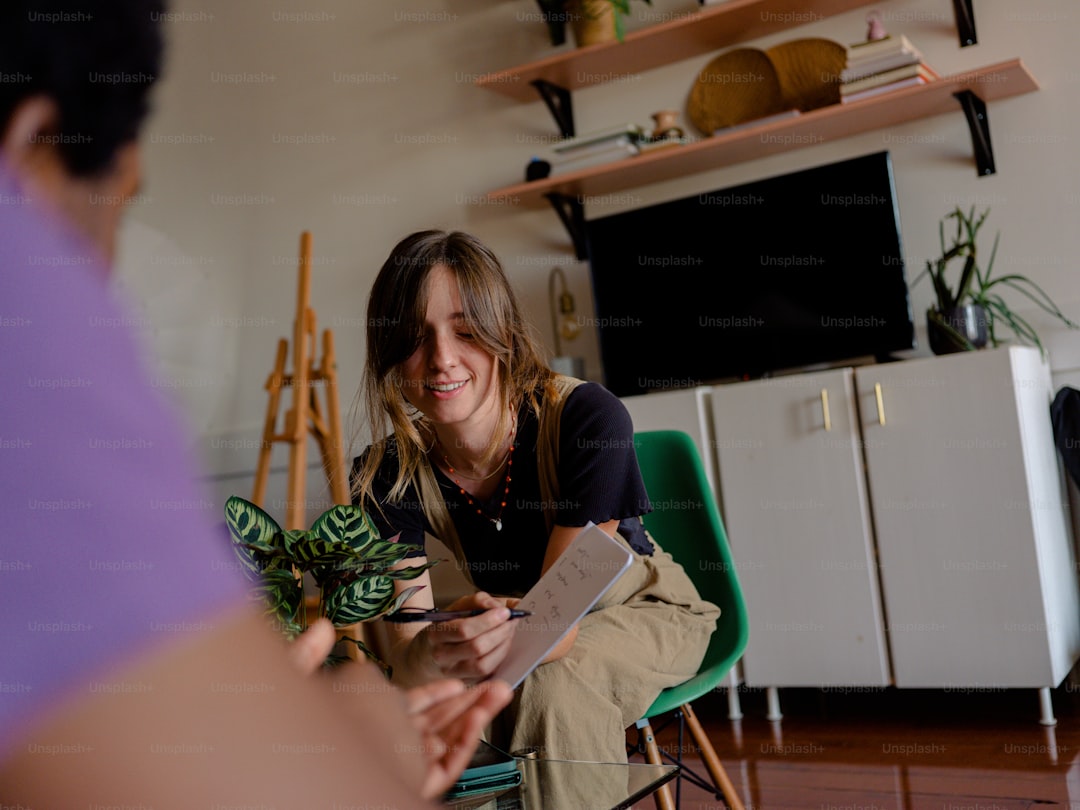Seasonal Escapes for Nomads in the Old Continent

Introduction
The European continent offers a constantly shifting tapestry of climate, culture and community. For digital nomads who can work from anywhere, the ability to follow the seasons opens a world of possibilities. From the tulip‑filled fields of the Low Countries in early spring to the snow‑capped peaks of the Alps in winter, each season presents a distinct set of destinations that combine reliable connectivity, affordable living and an inspiring environment. This guide explores the best seasonal escapes for nomads in Europe, highlighting where to go, what to expect and how to make the most of each period of the year.
Why Travel by Season
Traveling with the seasons is more than a matter of weather. It influences the cost of living, the rhythm of daily life and the availability of co‑working spaces. During peak tourist months, prices rise and crowds swell, while shoulder periods often bring lower rents, quieter cafés and a deeper sense of local life. Seasonal migrations also align with cultural festivals, outdoor activities and natural phenomena that can enrich a nomad’s experience far beyond the typical office view.
For a digital nomad, the ideal seasonal escape balances three core factors:
- Connectivity – stable internet, plenty of cafés with power outlets and reliable mobile data.
- Cost – affordable accommodation, food and transport that keep the budget in check.
- Lifestyle – opportunities for recreation, community and cultural immersion that complement remote work.
Below you will find a detailed look at the four main seasonal windows in Europe and the top locations that excel in each category.
Spring Awakening
The Low Countries – Amsterdam, Utrecht and Ghent
Early spring, from March to May, brings a gentle thaw across the Netherlands and Belgium. The famous tulip fields begin to bloom, and the streets fill with cyclists and outdoor markets. Amsterdam and Utrecht boast a high density of co‑working spaces, many of which are located in historic canal houses with large windows and fast fiber connections. Ghent, a smaller Belgian city, offers a more relaxed pace while still providing solid internet and a vibrant student community.
- Cost – Spring sees a dip in tourist traffic, making short‑term rentals and hostels noticeably cheaper than the summer peak.
- Lifestyle – Bike rides along the canals, visits to flower markets and weekend trips to Keukenhof or the historic towns of Bruges and Delft.
- Community – Numerous meet‑ups for freelancers and tech enthusiasts, often hosted in cafés or shared workspaces.
The Mediterranean Coast – Valencia and Dubrovnik
Southern Spain and the Adriatic coast warm up nicely without the scorching heat of July and August. Valencia’s historic centre, the futuristic City of Arts and Sciences and its extensive beach promenade make it a perfect spring base. The city’s public Wi‑Fi network covers most of the downtown area, and the cost of living remains lower than Barcelona or Madrid.
Dubrovnik, perched on the Dalmatian coast, awakens in April with fewer cruise ships and a calm sea. The old town’s stone streets are filled with artists, writers and remote workers who appreciate the dramatic backdrop.
- Cost – Accommodation rates drop sharply after the winter lull, especially for apartments outside the historic centre.
- Lifestyle – Early‑season hikes in the nearby mountains, fresh seafood at seaside tavernas, and the chance to explore Roman ruins before the crowds arrive.
- Connectivity – Both cities have multiple fiber‑optic providers, and most cafés offer high‑speed Wi‑Fi.
Central Europe – Prague and Budapest
The “Golden Triangle” of Prague, Budapest and Vienna shines brightest in spring. Mild temperatures and blooming gardens create an inviting atmosphere for outdoor work. Prague’s Old Town Square and Budapest’s ruin bars both serve as informal coworking hubs, while a growing number of dedicated spaces provide private desks and meeting rooms.
- Cost – Spring brings lower prices for Airbnb stays and shared apartments, especially in neighborhoods away from the main tourist arteries.
- Lifestyle – River cruises on the Vltava and Danube, early‑season wine tasting in the Moravian and Tokaj regions, and the famous Easter markets that showcase local crafts.
- Community – International nomad groups meet regularly for language exchanges and tech talks, often in historic cafés with marble tables.
Summer Retreats
The Scandinavian Summer – Copenhagen, Tallinn and Reykjavik
When the sun barely sets in the north, the work‑life balance reaches a new level. Copenhagen’s cycling culture, combined with a robust digital infrastructure, makes it a top summer destination. The city’s many waterfront cafés provide an inspiring backdrop for remote work, and the long daylight hours allow for extended productivity periods.
Tallinn, Estonia’s capital, offers a blend of medieval charm and modern tech. Its e‑residency program attracts digital entrepreneurs, and the summer months bring a vibrant festival scene that fosters networking.
Reykjavik, although further north, enjoys near‑midnight sun in June. The city’s compact size means a short commute from any coworking space to the iconic Hallgrimskirkja or the bustling harbor.
- Cost – Summer is the high season, but the relatively high salaries of locals keep prices stable for short‑term rentals. Budget‑friendly hostels and guesthouses are plentiful.
- Lifestyle – Kayaking in the Oslofjord, island hopping around the Baltic Sea, and exploring volcanic landscapes in Iceland.
- Connectivity – All three capitals rank among the world’s fastest internet providers, with fiber speeds exceeding 200 Mbps in most districts.
The Alpine Escape – Innsbruck, Chamonix and Bled
Mountains become a playground for remote workers seeking a blend of work and outdoor adventure. Innsbruck, nestled in the Austrian Alps, offers a network of coworking spaces that cater to both tech professionals and athletes. The city’s efficient public transport connects directly to hiking trails, ski lifts and alpine lakes.
Chamonix, located on the French side of Mont Blanc, attracts a community of digital creators who value the dramatic scenery. While accommodation can be pricey during the peak summer months, shared apartments and hostels provide affordable alternatives.
Lake Bled in Slovenia, with its iconic island church and emerald waters, offers a tranquil setting for focused work. The town’s small size means a short walk from any café to the lakefront, and the surrounding Triglav National Park provides endless opportunities for weekend hikes.
- Cost – Mid‑summer can be expensive in the most popular ski resorts, but smaller alpine villages remain budget‑friendly.
- Lifestyle – Trail running, mountain biking, paddle‑boarding on alpine lakes and evening concerts in mountain huts.
- Connectivity – Most alpine towns now have high‑speed broadband, and mobile 5G coverage is expanding rapidly across the region.
The Adriatic Coast – Split, Hvar and Kotor
The Dalmatian coastline blossoms under the Mediterranean sun. Split’s historic Diocletian’s Palace houses numerous coworking hubs within its stone walls, offering a unique blend of ancient architecture and modern office equipment. The city’s ferry connections make it easy to hop to nearby islands such as Hvar, Brac and Vis for weekend escapes.
Kotor, tucked into a bay of Montenegro, provides a quieter alternative with dramatic cliffs and a medieval old town. Its growing community of freelancers appreciates the low cost of living and the breathtaking sunsets over the bay.
- Cost – Summer prices rise, but early‑season bookings (May and early June) secure lower rates.
- Lifestyle – Sailing, cliff diving, open‑air concerts and fresh seafood caught daily.
- Connectivity – Both Split and Kotor have reliable fiber connections, and many cafés provide power outlets for laptop users.
Autumn Harvest
The Wine Regions – Porto, Bordeaux and Tuscany
Autumn brings harvest festivals, cooler weather and a slower rhythm that suits deep work sessions. Porto, perched on the Douro River, offers a thriving tech scene alongside centuries‑old wine cellars. The city’s modern coworking spaces are often located in refurbished warehouses, giving a gritty yet creative atmosphere.
Bordeaux, the heart of French viticulture, sees the vineyards change colour in September and October. The city’s extensive public transport network makes it easy to commute to nearby wine estates for after‑work tastings.
Tuscany’s rolling hills and historic towns such as Florence, Siena and Lucca provide an idyllic setting for remote work. Many agriturismo farms now offer high‑speed internet alongside organic meals, making them perfect for longer stays.
- Cost – Accommodation rates dip after the summer rush, and many wineries offer discounted stays during the harvest period.
- Lifestyle – Vineyard tours, cooking classes, truffle hunting and the chance to experience local festivals that celebrate the harvest.
- Connectivity – Rural broadband has improved dramatically, and most agriturismo properties now advertise reliable Wi‑Fi as a key amenity.
The Baltic Experience – Riga, Tallinn and Vilnius
The Baltic capitals showcase a crisp, golden autumn that enhances their historic streetscapes. Riga’s Art Nouveau architecture, Tallinn’s medieval Old Town and Vilnius’s baroque churches all provide inspiring backdrops for remote work. The region’s cost of living remains low compared to Western Europe, and the tech ecosystems are rapidly expanding.
- Cost – Autumn sees a modest increase in tourism, but prices stay affordable, especially for shared apartments and guesthouses.
- Lifestyle – Forest walks, mushroom foraging, local craft fairs and the chance to explore the numerous museums that house centuries of history.
- Connectivity – All three cities rank among the fastest in Europe, with widespread fiber coverage and 5G networks in urban areas.
The Iberian Highlands – Salamanca, León and Zaragoza
Central Spain’s plateau region transforms in autumn, offering mild temperatures and a tranquil atmosphere. Salamanca, famous for its university, hosts a youthful community of digital creatives who gravitate toward its many cafés and libraries. León and Zaragoza, both historic trade hubs, have seen a surge in coworking spaces that cater to remote workers seeking a balance between work and cultural immersion.
- Cost – Housing costs are among the lowest in Western Europe, and the autumn months bring fewer tourists, which translates to lower prices for short‑term rentals.
- Lifestyle – Tapas tours, pilgrim routes along the Camino de Santiago, and weekend trips to the nearby Sierra de Gredos mountains.
- Connectivity – Strong fiber networks serve the city centres, and most cafés provide power outlets and fast Wi‑Fi.
Winter Warmth
The Iberian Peninsula – Lisbon, Madeira and the Canary Islands
While much of Europe endures frost, the southwestern edge offers mild winters that attract nomads looking for sunshine. Lisbon’s tech scene continues to thrive year‑round, and the city’s numerous coworking hubs remain fully booked even in December. Madeira, an autonomous Portuguese archipelago, provides a subtropical climate, dramatic cliffs and a growing community of remote workers who appreciate its “digital nomad visa”.
The Canary Islands, particularly Tenerife and Gran Canaria, combine volcanic landscapes with warm temperatures. Many resorts now market “work‑and‑play” packages that include high‑speed internet, coworking space access and organized networking events.
- Cost – Winter rates are lower than the summer high season, especially for longer stays.
- Lifestyle – Whale watching, hiking along lava fields, and sampling local wines in the island vineyards.
- Connectivity – All islands have robust fiber infrastructure, and many hotels now advertise dedicated workspaces with ergonomic chairs.
The Central European Winter – Krakow, Bratislava and Ljubljana
Eastern and Central Europe experience cold but remain affordable, and many cities have invested heavily in digital infrastructure. Krakow’s historic market square and vibrant student population create a lively environment for remote work, while the city’s numerous museums and cultural events keep evenings engaging.
Bratislava, situated on the Danube, offers a compact old town with a growing number of coworking venues housed in renovated industrial buildings. Ljubljana, the capital of Slovenia, maintains a high quality of life and a reputation for sustainability, making it a green winter destination.
- Cost – Winter is the off‑peak season, so accommodation and coworking memberships often come with discounts.
- Lifestyle – Christmas markets, hot‑spice soups, and the chance to ski in the nearby Tatras or Alps for a weekend.
- Connectivity – Fiber speeds exceed 100 Mbps in most city districts, and public Wi‑Fi is widely available in libraries and cafés.
The Alpine Winter – Zurich, Munich and Geneva
For nomads who thrive on a crisp, snowy atmosphere, the Alpine capitals offer world‑class infrastructure and a vibrant cultural scene. Zurich’s reputation as a financial hub is complemented by a flourishing startup ecosystem. The city’s coworking spaces often feature rooftop terraces that provide panoramic views of the lake and surrounding mountains.
Munich, known for its beer gardens and historic architecture, becomes a winter wonderland after the Oktoberfest season ends. Its many tech meet‑ups and hackathons continue through the colder months. Geneva, with its international organizations and multilingual population, offers a cosmopolitan vibe that attracts a diverse community of remote professionals.
- Cost – Winter can be pricey in major Swiss cities, but neighboring towns such as Lucerne, Innsbruck or Freiburg provide cheaper alternatives while still offering excellent connectivity.
- Lifestyle – Ice skating on frozen lakes, alpine skiing, and attending classical music concerts in historic halls.
- Connectivity – Switzerland consistently ranks among the top countries for internet speed and reliability.
Practical Tips for Seasonal Nomad Travel in Europe
Visa and Residency Options
Many European countries now offer digital‑nomad visas or extended stay permits that simplify long‑term travel. Portugal, Estonia, Croatia and Georgia are among the most popular programs, each with specific income thresholds and application procedures. Research the requirements well in advance, as processing times can vary from a few weeks to several months.
Choosing Accommodation
- Short‑term rentals – Platforms such as Airbnb, Booking.com and local classifieds provide flexibility for stays ranging from a few weeks to several months.
- Coliving spaces – Dedicated coliving communities combine private rooms with shared work areas, kitchens and social events. They are ideal for those seeking a built‑in network of fellow nomads.
- Hostels with work zones – Many modern hostels now feature quiet floors, high‑speed Wi‑Fi and power outlets, making them a budget‑friendly alternative for solo travelers.
When booking, verify the availability of a stable internet connection. Many listings now include speed test results or mention “fiber” in the description.
Managing Connectivity
Even in cities with excellent broadband, public Wi‑Fi can be unreliable. Keep a backup plan:
- Mobile hotspot – Purchase a local SIM card with a generous data allowance. European carriers often provide EU‑wide roaming, allowing you to stay connected across borders without changing SIMs.
- Coworking memberships – Investing in a coworking space gives you a guaranteed work‑friendly environment, complete with meeting rooms and printing facilities.
- Café etiquette – Choose cafés that advertise “fast Wi‑Fi” and have plenty of power sockets. It is courteous to buy a drink or snack if you plan to stay for several hours.
Health and Safety
- Health insurance – Ensure your policy covers medical care throughout the EU. Some countries require proof of insurance as part of the visa application.
- Safety – Europe is generally safe, but always keep an eye on personal belongings in crowded tourist areas. Use lockable luggage and store valuables in a hotel safe when possible.
Community and Networking
Joining local digital‑nomad groups can dramatically improve the quality of your stay. Platforms such as Meetup, Facebook groups and Slack communities often host language exchanges, hackathons, and social outings. Many coworking spaces also organize weekly “coffee chats” where members discuss projects and share resources.
Balancing Work and Exploration
- Time blocking – Allocate specific blocks of the day for deep work, using the early morning hours when cafés are quiet and daylight is abundant.
- Weekend adventures – Reserve Saturdays and Sundays for cultural excursions, hikes or festivals. This prevents burnout and keeps the remote work experience fresh.
- Seasonal rituals – Embrace local customs, such as participating in a spring flower festival, an autumn wine harvest, or a winter holiday market. These rituals provide a sense of belonging and enrich your travel narrative.
Conclusion
Europe’s diverse climates and rich cultural heritage create a mosaic of seasonal escapes that cater perfectly to the digital nomad lifestyle. Spring offers blooming landscapes and lower costs in the Low Countries, the Mediterranean and Central Europe. Summer brings endless daylight, vibrant festivals and outdoor adventures across Scandinavia, the Alps and the Adriatic coast. Autumn presents harvest celebrations, mellow weather and affordable living in wine regions, the Baltics and the Iberian highlands. Winter, while colder in many areas, still provides mild havens in the Iberian Peninsula, lively city life in Central Europe and world‑class infrastructure in Alpine capitals.
By aligning your travel plans with the natural rhythm of the continent, you can enjoy reliable connectivity, affordable accommodations and a lifestyle that blends productivity with exploration. Whether you are a software developer chasing sunrise over a Danish harbor, a writer finding inspiration among Tuscan vineyards, or a designer sketching ideas on a Lisbon balcony, Europe’s seasonal escapes are ready to welcome you. Pack your laptop, choose your season, and set off on the next chapter of your nomadic adventure.
Random Posts

Live and Work in Latin America’s Vibrant Remote Hubs
Discover Latin America’s top remote working hubs, from Mexico City’s culture to Florianópolis surf, with insider tips on visas, cost, internet, coworking and lifestyle for digital nomads seeking affordable vibrant living.
2 months ago

Exploring the Best Coworking Communities for Digital Nomads
Discover the top coworking communities worldwide that give digital nomads a productive hub, supportive network, and local culture, plus tips for picking the perfect space for your next adventure.
1 month ago

Finding Freedom Affordable Nations Offering Digital Nomad Visas
Discover budget-friendly countries that offer digital nomad visas, letting you work remotely while enjoying low living costs, tax perks, and easy residency options.
2 months ago

Mastering Remote Work Productivity and Finding Top Digital Nomad Jobs
Unlock the secrets to thriving remotely with proven productivity frameworks, essential tools, and step by step tactics to land top digital nomad jobs and boost your freedom focused career.
2 weeks ago

Mastering Remote Work with Proven Productivity Tools
Learn the top productivity tools for remote work and how to blend them into a seamless system that boosts focus, organization, and collaboration, so you thrive, not just survive, wherever you work.
2 months ago
Latest Posts

Essential Software Every Remote Professional Should Use
Master remote work with essential tools: instant messaging like Slack, high definition video calls such as Zoom, and asynchronous voice apps. Streamline communication, stay connected and boost productivity.
1 day ago

Mastering Remote Work Productivity for Digital Nomads and Freelancers
Learn proven habits, tools, and tactics that help digital nomads and freelancers stay focused, deliver quality work, and maintain a sustainable lifestyle while traveling the world.
1 day ago

Tech‑Friendly European Towns Perfect for Remote Living
Discover Europe’s best small towns where fast internet, affordable living and vibrant tech communities let you work remotely while soaking up historic charm, lakeside views or mountain air.
1 day ago